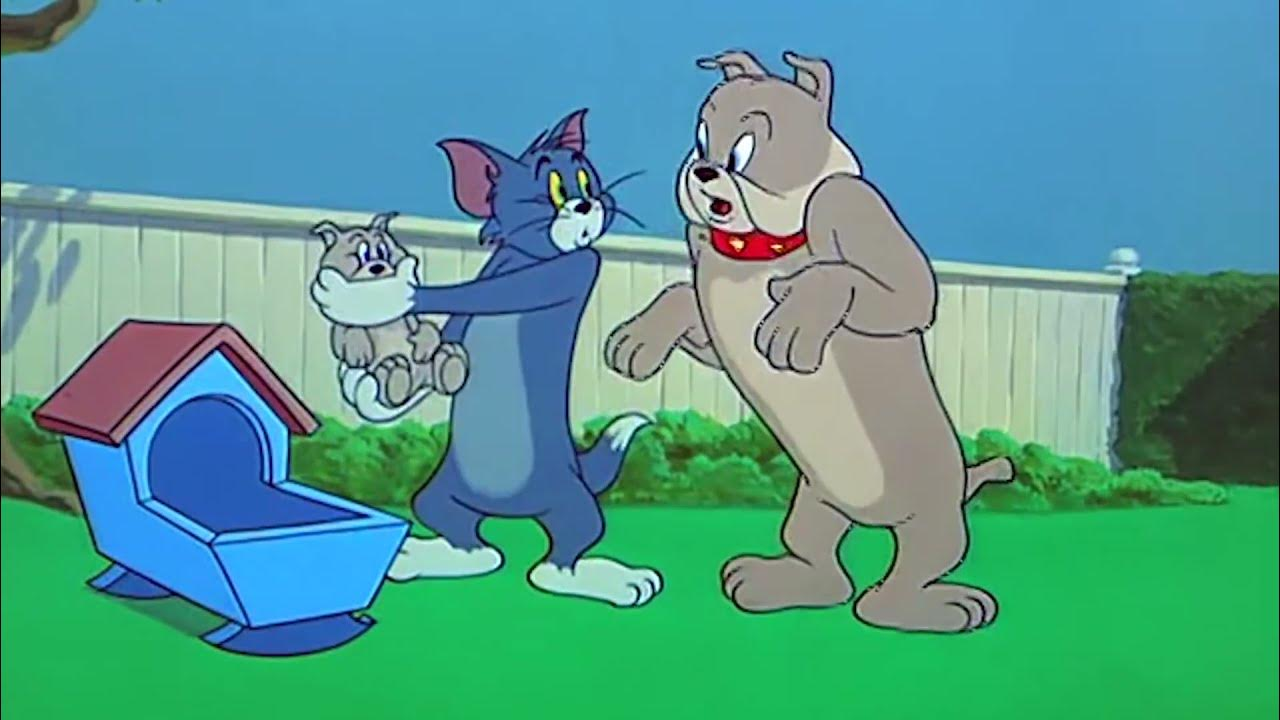
Hic-cup Pup marks the 4th Tom and Jerry film to feature the father/son dog duo, Spike and Tyke in major roles. Though the duo did also have a cameo in Life with Tom (1953) and of course Spike made many appearances without Tyke. The duo would be featured in three more Tom and Jerry theatrical cartoon shorts and star in two theatrical cartoon shorts without Tom and Jerry.
In this short film Tom and Jerry's fighting wakes Tyke up. When Tyke wakes up, he gets the hiccups. Spike gets angry and threatens Tom. Jerry of course overhears this and decides to disturb Tyke's rest and frame Tom.
While this may not be Tom and Jerry's best film, it is a very solid and fun cartoon. The storyline is very familiar and makes it hard for this film to stand out among the other Spike and Tyke cartoons. However, when it comes to this, it is important to remember that these cartoons were made to be shown in movie theaters alongside the feature film. Unlike today when these cartoons are mostly shown on TV, movie goers had not seen these shorts dozens of times and may have not even seen the previous Spike and Tyke shorts at all. So, the repetitiveness would not have been as obvious to the intended audience (anyone who went to the movies) as it is to us today. For us today though there are enough strong gags to make up for the familiarity. While being a 50's Tom and Jerry short, there is not the constant brigade of great gags seen in the 40's cartoons, there a few really funny moments here. I love when Spike gets the hiccups too and his hiccups make it sound like words are being censored, the gag with the trumpet and Tom covering Tyke's mouth before he hiccups and the hiccup then coming out of Tom's mouth. This cartoon also benefits from the usual strong character animation and Scott Bradley's great musical score. Best of all though is that this short has a very satisfying ending.
The credited animators on this film are Ed Barge, Kenneth Muse, Ray Patterson and Irven Spence. Robert Gentle is the credited background artist. This is the 82nd Tom and Jerry short overall. This cartoon can be found on the DVD set, Tom and Jerry Spotlight Vol. 3.







